Buzz of hope: After numerous tiger encounters, traditional honey gatherers of the Sundarbans get a new lease of life
In a bid to reduce human-tiger encounters when fishing or honey gathering, the West Bengal forest department’s Joint Forest Management Committee has introduced local villagers of the Sundarbans to beekeeping. The project is creating a buzz.

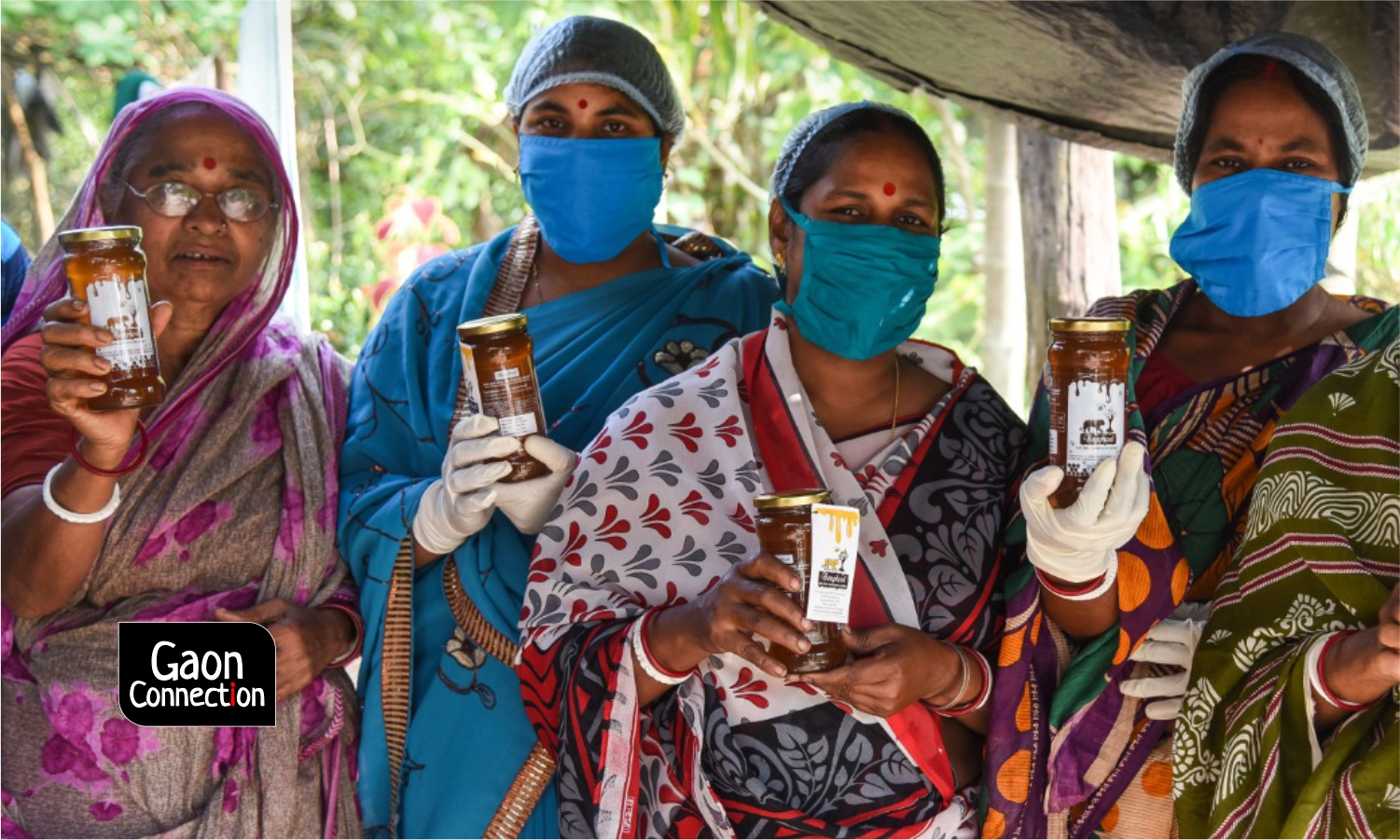
The West Bengal Forest Department’s Joint Forest Management Committee is training local villagers in the Sundarbans in beekeeping. Pic: Tanmoy Bhaduri
The Sundarbans, West Bengal.
On a winter afternoon, 66-year-old Rama Sarkar of Jamespur village in Satjelia island of the Indian Sundarbans recounts her daily ordeal as a resident of one of the islands of the world’s largest mangrove forests. “Joley kumir, dangay bagh, ei vabe beche achi.” [We live in a situation where there are crocodiles in the water and tigers on land].
On April 20 this year, Sarkar’s younger son Rathin, 36, a mauli (honey collector) was found dead, his corpse apparently half-eaten by a tiger at Pirkhali jungle in the Sundarbans forest — the first case of human-tiger encounter since the COVID-19 lockdown announced across the country on March 25.
“Rathin’s father [Niren Sarkar] was also killed in a tiger attack in 2009 when he entered the forest to catch crab after Cyclone Aila hit our island,” Sarkar narrated to Gaon Connection how such encounters had ruined her life.
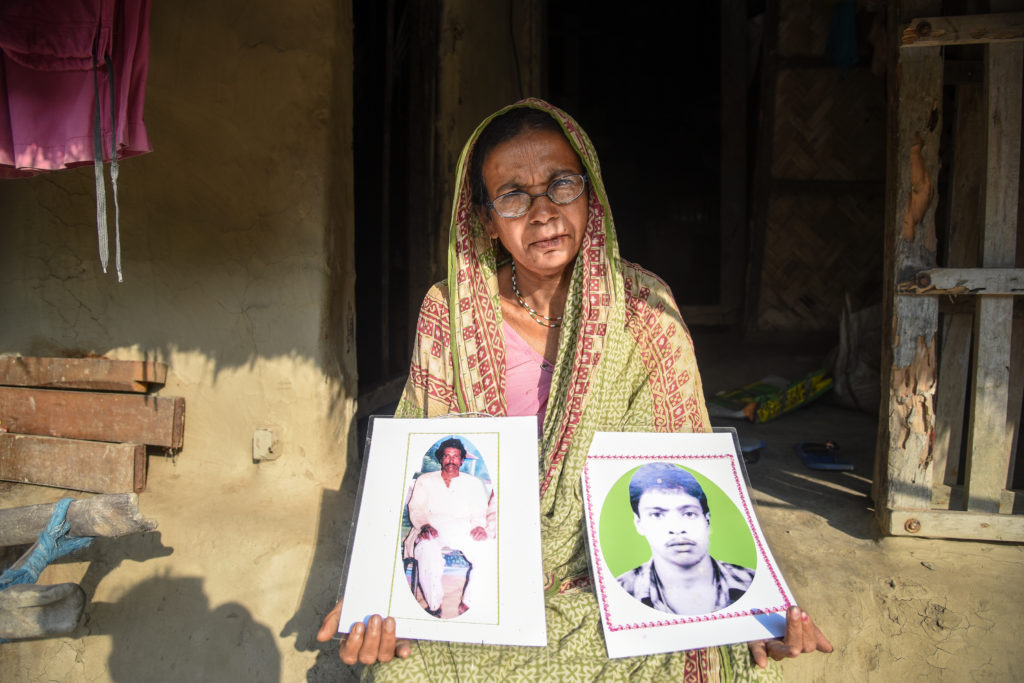
Every year, villagers desperate to make a living enter the mangrove forests of the Sundarbans, and get attacked and killed. However, a project by the West Bengal Forest Department’s Joint Forest Management Committee is trying to bring down the human-tiger conflict by training them in bee-keeping and strengthening their livelihoods.
It is due to the efforts of this project that since December 2 this year, when the Centre for Science and Environment released its report on adulterated honey, the phone has not stopped ringing at the Kultali Sundarban Banaraksha Bahumukhi Samabay Samity.
The Samity in the Sundarbans, about 100 kilometres from West Bengal capital Kolkata, markets honey under the Bonphool brand. It has been formed by the state forest department’s Joint Forest Management Committee, and it monitors four village-level co-operatives in a bid to create alternative livelihood opportunities.
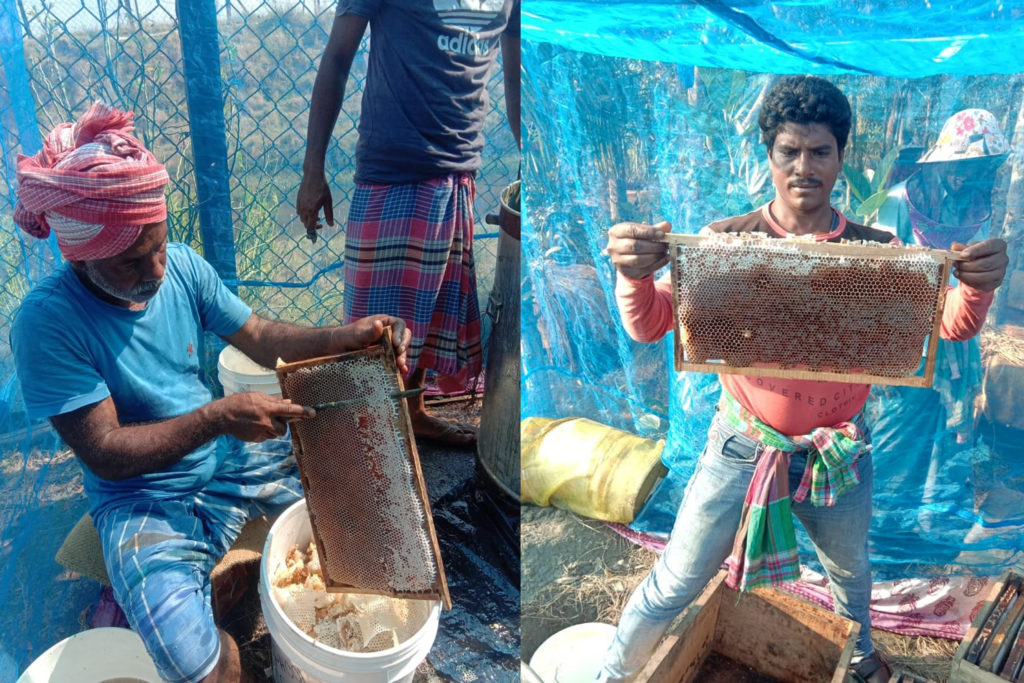
To provide local residents an alternative livelihood that did not involve trips into the deep forest, the Joint Forest Management Committee started an initiative in March 2019 — it introduced local residents to beekeeping. The project began with 72 maulis living in the fringe areas of the Sundarbans Tiger Reserve.
“We were able to produce 35 tonnes of honey till May this year and our stock is exhausted. After the exposé on adulterated honey, we received more than one thousand orders every day,” Debasish Mondal, secretary of the Samity, told Gaon Connection.
Sundarbans: Critical tiger habitat
The Sunderbans — the world’s largest delta — comprises 102 islands in India. While 54 are inhabited by humans, around 100 Royal Bengal Tigers rule the rest. Every year, thousands of people enter the forest to collect honey or catch fish and crab, and are attacked by tigers and crocodiles.
Pradip Chatterjee, secretary of Dakshin Banga Matsyajibi Forum, a small-union union of West Bengal’s fishers, said the size of the core area of the Sundarbans Tiger Reserve is expanding by the day and it was recently notified as a critical tiger habitat.
As a result of this, a large part of the Sundarbans’ waters is officially closed to fishing and it is permitted only in a portion of the buffer zone. “But the villagers of the Sundarbans who have been fishing for the past three generations have not been provided alternative opportunities to survive. Since fish and crab yields in the buffer zone are not substantial, they are left with no option but to risk their lives,” Chatterjee explained.

Life for the traditional honey gatherers of the Sundarbans has been fraught with danger too, due to increasing human-tiger encounters, some of which prove fatal. There are around 3,000 tiger widows in the islands of the Sundarbans, women whose husbands have been killed while in quest of a livelihood. The honey thus collected was tinged with the salt of tears and lives lost.
Tarun Choudhury, a villager of Maipith in Kultali, told Gaon Connection that his grandfather lost his life in a tiger attack while in the forest to gather honey. “Local residents need more alternative livelihoods so that they don’t enter the deep forest,” he said.
The beekeeping initiative was launched by Santosha Gubbi R, then divisional forest officer at the Sunderbans. “I found several villagers getting killed in tiger attacks after entering the forest to collect honey. This is not good for conservation,” Gubbi, now associated with the West Bengal Forest Development Corporation Ltd, told Gaon Connection. “My aim was to stop people from venturing inside the reserve forest and avoid fatal encounters with tigers as well as include local communities in the conservation process,” he added.
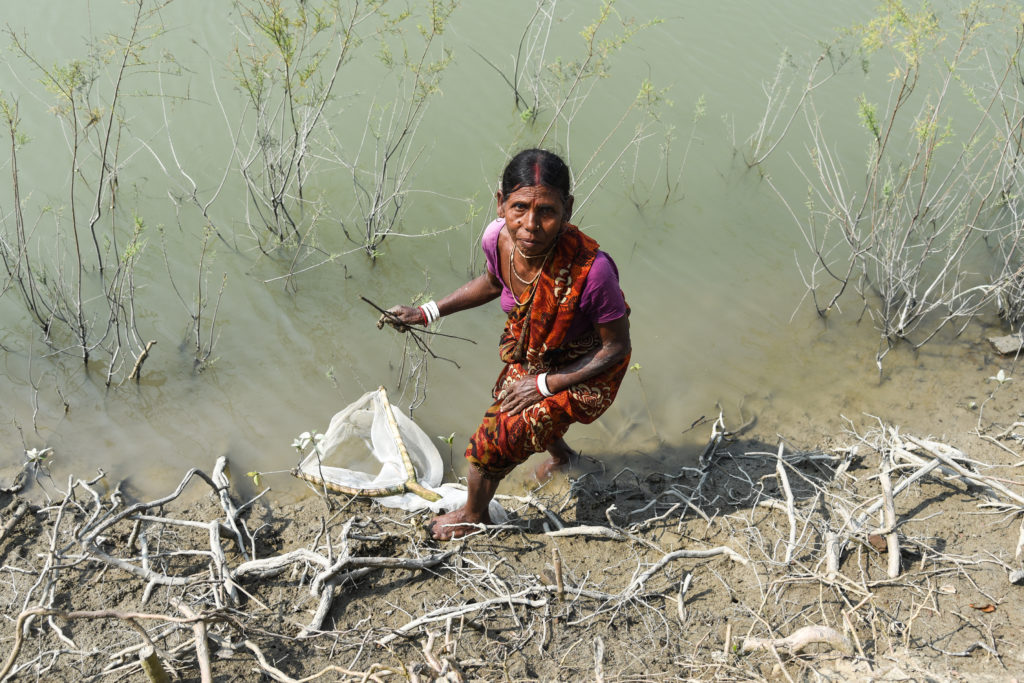
Safer livelihood
Three cooperative societies have been formed among maulis in Kultali, Nolgora and Jharkhali villages. With support from WWF India, members have been provided with training and equipment to set up honey collection boxes near forest department camps inside the mangrove forest.
Milan Kanti Mondal, divisional forest officer of 24-Parganas (South) division, told Gaon Connection that the forest department “worked as a facilitator. We helped them with initial linkages in marketing and want these cooperatives to be self-sufficient”.
“The pilot project was after preliminary field study. Our main motto was to reduce human-wildlife encounters in the region by generating potential alternative livelihoods,” Ratul Saha of WWF India told Gaon Connection.
Though located deep inside the forest, the forest department camps and adjourning areas have “low risk of tiger attacks and we can go without any fear”, said Debasish Mondal.
The Samity aims to include 200 families in the cooperative, and “that will help us to cover more areas under the Sunderbans”, he added.

Pralay Samanta, a member of one of the cooperatives, highlighted that people’s income has increased through beekeeping. “Earlier, a mauli used to earn hundred rupees a kilo of honey after risking his life in the forest. Now, he can earn five hundred rupees a kilo in a safe environment,” he said.
But for this beekeeping project, the women left to fend homes after the men died in tiger encounters would have continued to live a dreary existence.
21 dead in human-tiger conflict in 2020
While the bee-keeping project is working towards bringing down the human-tiger encounter in the Indian Sundarbans, so far this year, at least 21 villagers have been killed in tiger attacks while entering the mangrove forest to collect honey and catch fish and crab, according to the Dakshin Banga Matsyajibi Forum. Eighteen of them were killed during the pandemic (March end-October-end) and many sustained injuries. Fifteen deaths were reported after May 20, the day Cyclone Amphan hit the Sundarbans.
However, field director of the Sundarban Tiger Reserve Tapas Das claimed that only four people have been killed in human-tiger encounters this year. “Fishing inside the national park is prohibited, and these fishers illegally enter the core areas,” he told Gaon Connection.
Santosh Mondal, a retired government official at Kumirmari island, believes the numbers are higher and not recorded because many of these incidents happen inside the reserve forest and are not reported to authorities to avoid complications.

Source: Dakshin Banga Matsyajibi Forum
The Sundarbans is an ecologically-fragile region that has been under stress due to erosion linked to rising sea levels and frequent cyclones. Livelihoods have been lost due to the pandemic and homes washed away in the Cyclone Amphan.
The Sunderbans saw reverse migration recently and without enough livelihood opportunities, inexperienced villagers have been venturing into the forests in search of a living. For instance, 34-year-old migrant construction labourer Haripada Mondal of Kumirmari village lost his life in a tiger attack in September this year when fishing in a tidal creek.
“He was not a professional fisher. He went to catch some fresh fish for our lunch,” 24-year-old Ashtami, his widow, told Gaon Connection. Forest officials and locals found his corpse deep inside the forest between Kumirmari and Jhilla on September 29 this year.
According to Surojit Roy, a school teacher at Rajat Jubilee village, “many migrant workers have returned to their villages after losing their jobs during the lockdown. Several have started catching crab and fish to make ends meet”.
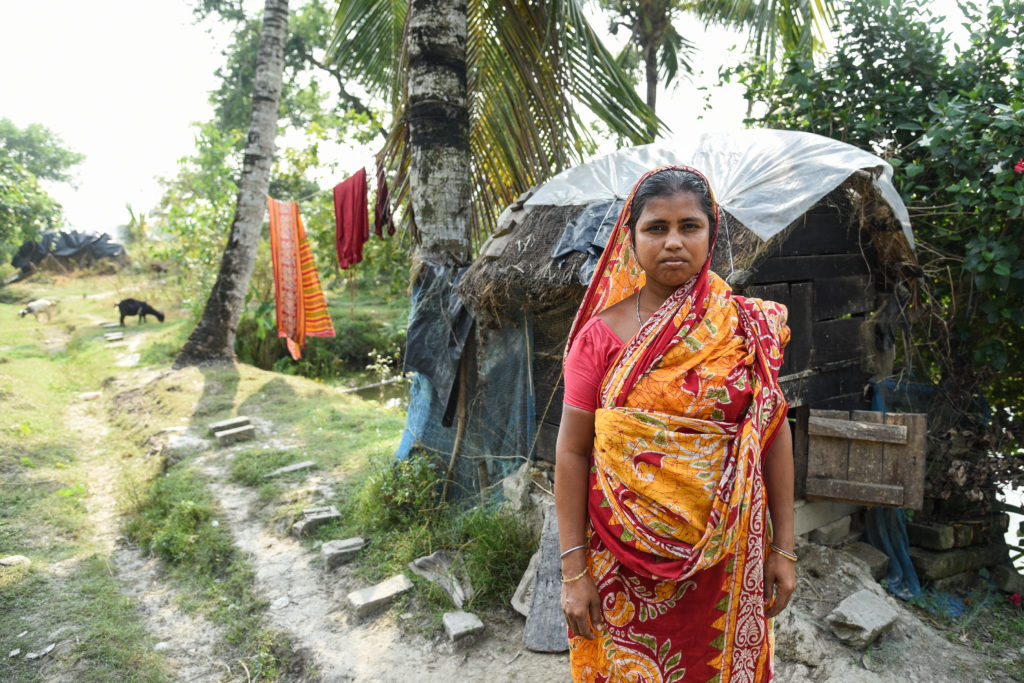
The life of tiger widows
Sabita Mondal, 30, is one of the recent tiger widows living in Lahiripur village on Satjelia island. The death of her husband Sashankha Mondal (45) has left her to raise two children aged 12 and 14 alone. Sashankha, along with two others, had ventured into the creek on a small boat. According to Sabita, the incident took place inside Marichjhapi forest on September 30 this year.
Sabita has decided to fish in the forest to sustain her family, despite the danger it involves. As local residents enter restricted areas to catch fish and crab without a proper permit, these bagh-bidhobas (tiger widows) cannot claim compensation, and so they rarely inform authorities about tiger-linked deaths.
“Every year, eighty to hundred people are killed in tiger attacks, but these are hardly reported. In many cases, the corpses of those attacked by tigers cannot be traced and they are treated as missing persons,” said Nakul Jana, president of the Sundarban Tiger Widow Welfare Society.
These widows are the sole breadwinners of their families, usually taking care of three to four children, and, sometimes, the elderly too.
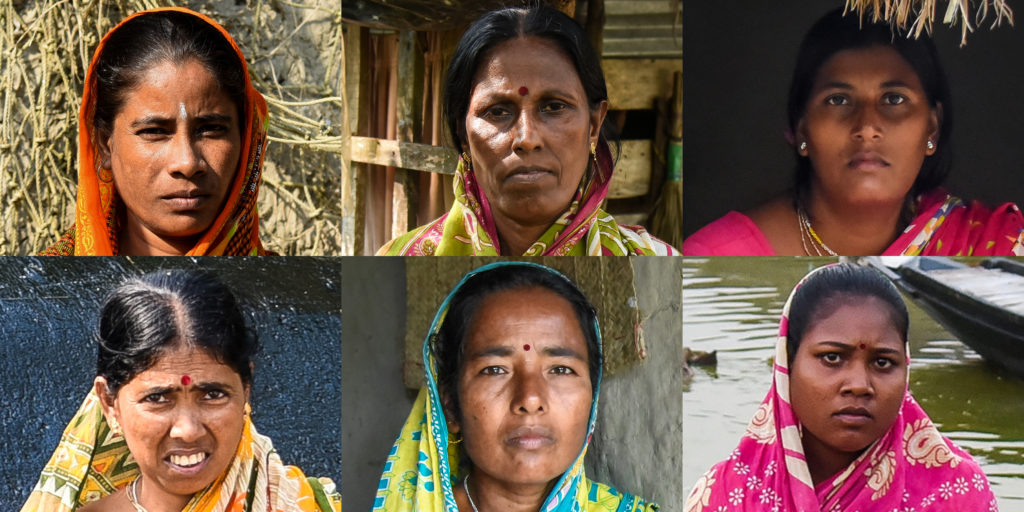
A large number of widows who lost their spouses to tigers have already moved to cities and taken up odd jobs to survive. “With no male earning member in the family, they face the Herculean task of running their families. Almost every villager in these islands has a tragic story to narrate, but the government doesn’t care about them,” Jana added.
Tapas Das said the forest department alone was not responsible for alternative livelihood generation. “Many government departments such as fisheries, agriculture and labour are involved. People should reach out to them and also diversify livelihoods. Our joint forest management committees work with several NGOs to support communities find alternative livelihoods,” he added.
Local communities living on the islands of the Sundarbans claim that conservation should not exclude people, but should take care of their livelihoods.
Artisanal (traditional/subsistence fishing) fisher rights groups argue that fishers and honey collectors have been an integral part of the Sundarbans ecology since pre-Colonial times and their right to fish in the tidal waters of the Sundarbans is officially recognised.
“We are treated as intruders in our own land. Sometimes, we are fined heavily, or our fishing nets, food items and even the fish caught are seized by them without reason,” Montu Koyal, a fisher at Satjelia told Gaon Connection.
Chatterjee of Dakshin Banga Matsyajibi Forum pointed out that the government is trying to impose restrictions on marginalised communities. “The method of demarcating areas as buffer or core is done in an unscientific and illegal manner without consulting forest dwellers and all provisions of the Forest Rights Act 2006 have been ignored,” he claimed.
However, if the Bonphool experiment succeeds, it will ensure that the rights of traditional honey gathered are protected, while they continue doing their work in a safer environment. And the honey thus collected will be sweet and ethical the way it was meant to be.
Tanmoy Bhaduri is Kolkata-based independent journalist who writes on social, cultural and environmental issues. This story was produced with the support of Internews’ Earth Journalism Network.

